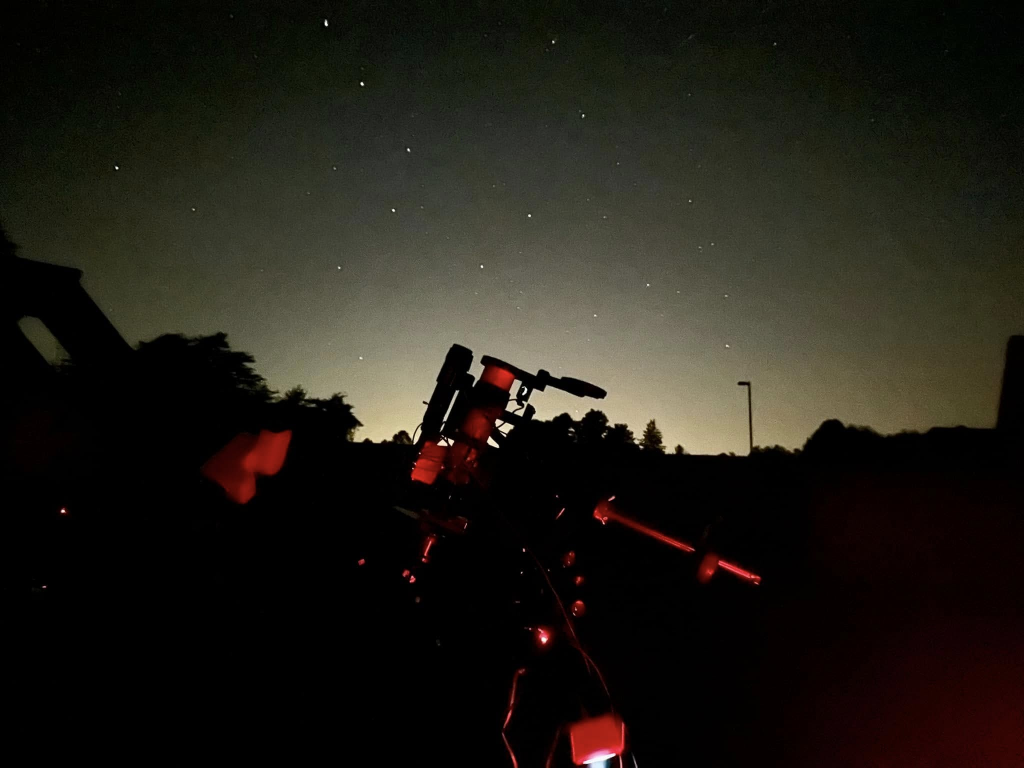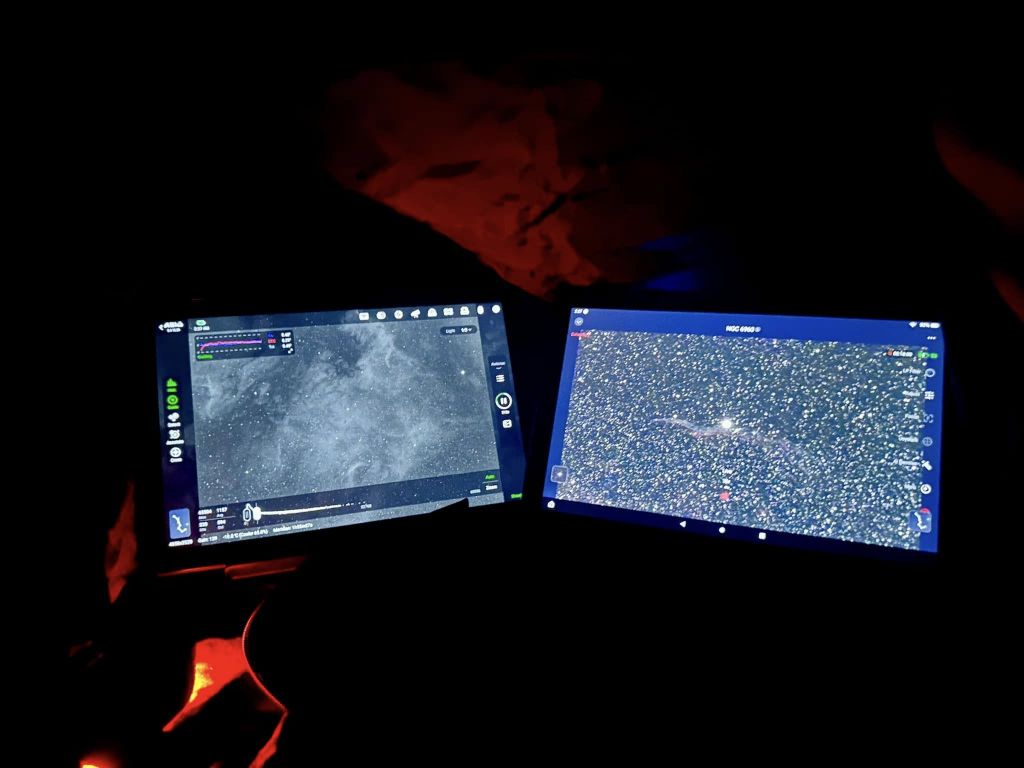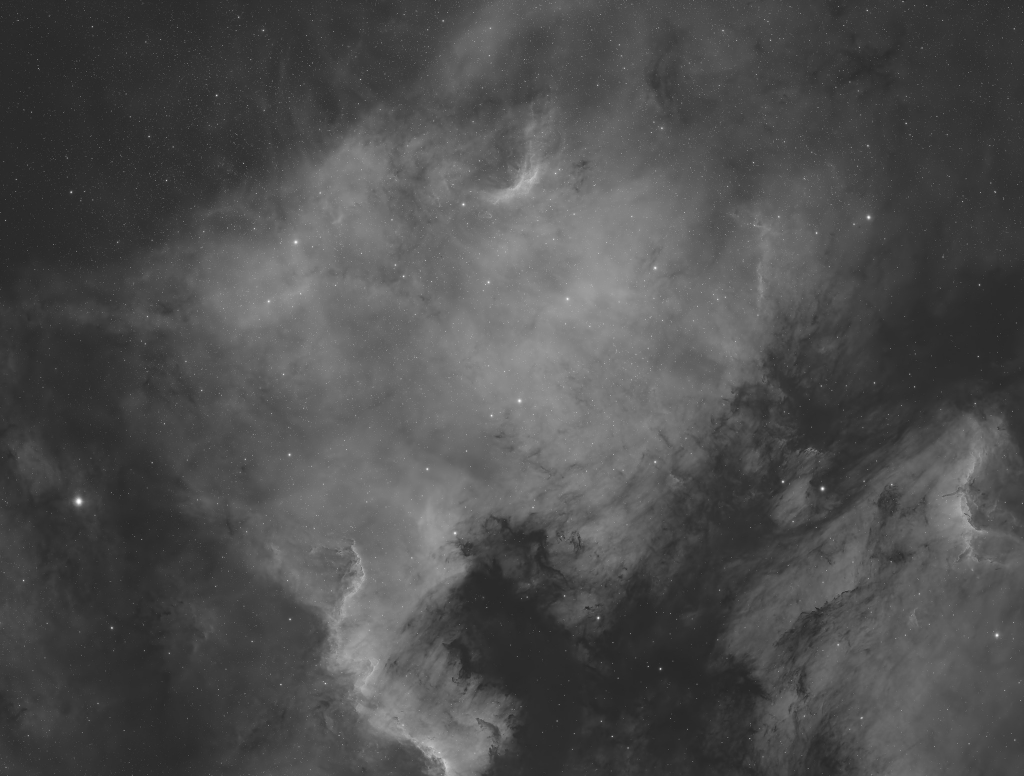It was clear, close to a new moon, and I was able to get a half day off from work, so this means a trip to my favorite observing place, The John Glenn Astronomy Park! It was very hot out, with the heat index at around 100F (38C) so packing the car was uncomfortable, but no matter, it was going to be clear. With the AC on full blast, I was heading south to the Hocking Hills.
I arrived at about 8pm and there were quite a lot of people there with their astro-gear setup. The JGAP Regulars were in full force! The parking lot was pretty full with members of the public wanting to take advantage of the clear skies. I brought the 70mm setup and both the S30 and S50.
I wanted to get some narrowband data for NGC7000 and use the Seestars for gathering data on more Messier Objects. I purchased the new ZWO Smart Telescope Tripod Head for each of the Seestars and wanted to see how they would do. As is with most endeavours, things don’t always go to plan, but I am happy to report that the night still ended a success, although with reduced results than I originally intended.

With sweat pouring off of me, I got everything setup while listening to some great music provided by one of the JGAP Regulars. The sky was clear and there were no bugs biting which is always welcome. Cygnus was rising in the East so I decided to get the rig acquiring data first. After a great polar alignment, the scope slewed to where it needed to be. Data was being acquired.
Onto the Seestars. I have the summer sky pretty much wrapped up for Messier objects and the spring Messier objects were setting in the west. I decided to get some data on old favorites with the S30. So I pointed the telescope to M8, The Lagoon Nebula. With the wider field of view of the S30, I wanted to see how well it would do. I pointed the S50 to the Dumbell Nebula for fun and to show some of the public what these little telescopes can do. This is where the first issue of the night occurred.
I noticed the S50 was not tracking at all. After some troubleshooting, I noticed the base I was using (not the one provided by the Tripod Head) that connects the S50 to the head was catching on one of the feet of the S50. The S30 would not have this problem so I swapped them out and everything was as it should be.
On the imaging rig, I noticed my travel router kept rebooting which was dropping the connecting between the ASIAir and the mount. I discovered that the power to the router from the mount’s USB port was intermittent. I disconnected the router power from the mount and connected it to a batter pack. Issue number two resolved. Once I fixed this, imaging began again in earnest.

This was the first time I did not take a laptop with me as I have done in the past. I wanted to see if I could get meaningful imaging done without it in my effort to reduce what I take. With the Kindle Fires controlling the S30 and the ASIAir, and my Android phone controlling the S50, I had my little command center running.
With twilight starting to appear in the east, it was time to start shutting things down and packing. I was able to get 3 hours of Hydrogen Alpha light on NGC7000 and an hour on M31, M27, NGC6992, and NGC6960.
Some observations:
- With the warm temperature that night, the S30 is far noisier. The S50 was less so.
- My battery pack I was using got some moisture inside the controls and was behaving erratically. I think in the future I will be putting them under the portable table I bring to keep the dew off (it was very dewy!)
- Use my legs more when lifting heavy objects. I must have done something to pull a muscle in my back and was in extreme pain throughout the week. My wife convinced me to go to the doctor and was able to get some medicine to help with this!
Throughout the summer, I plan to gather more narrowband data on NGC7000.

